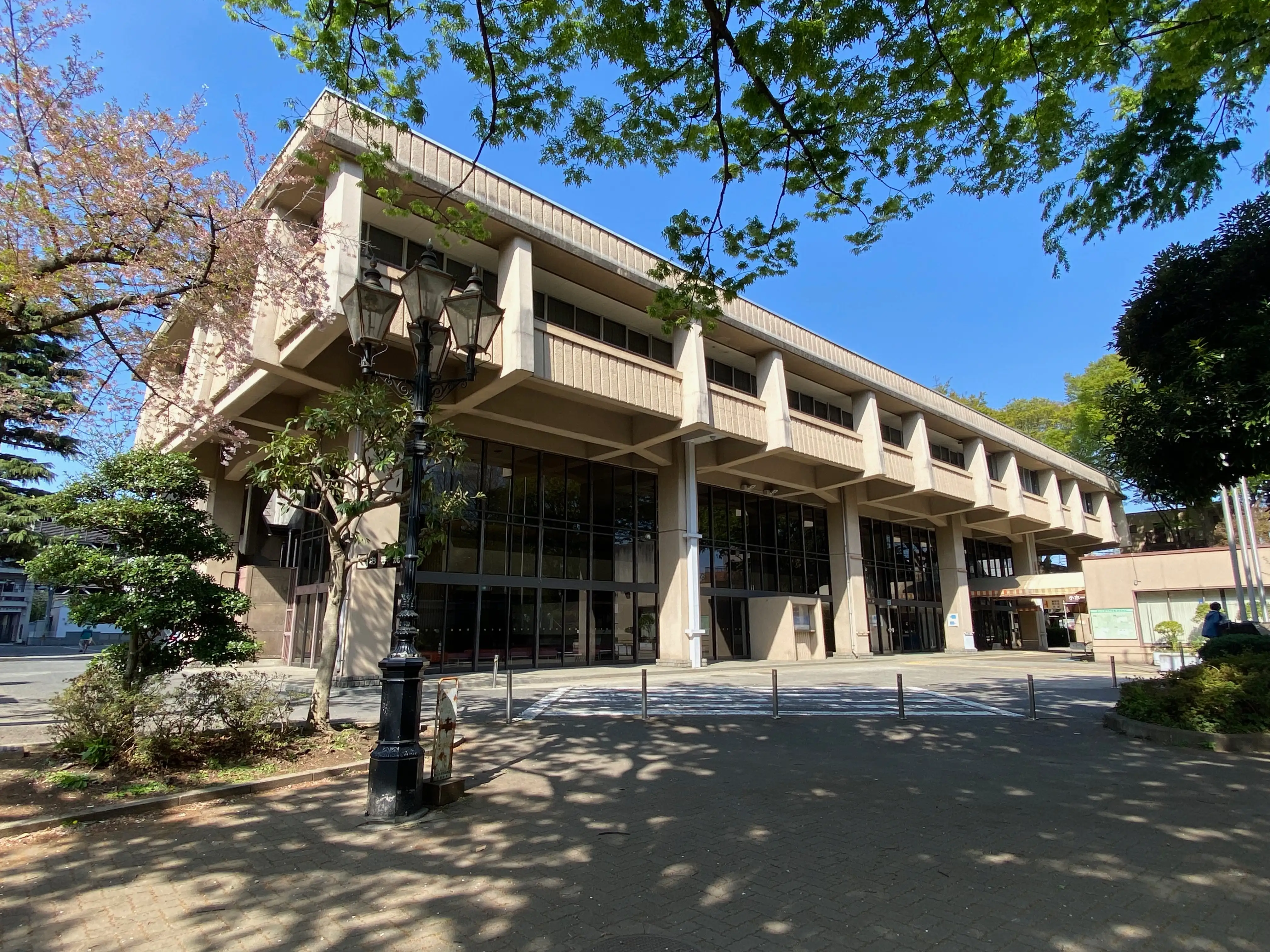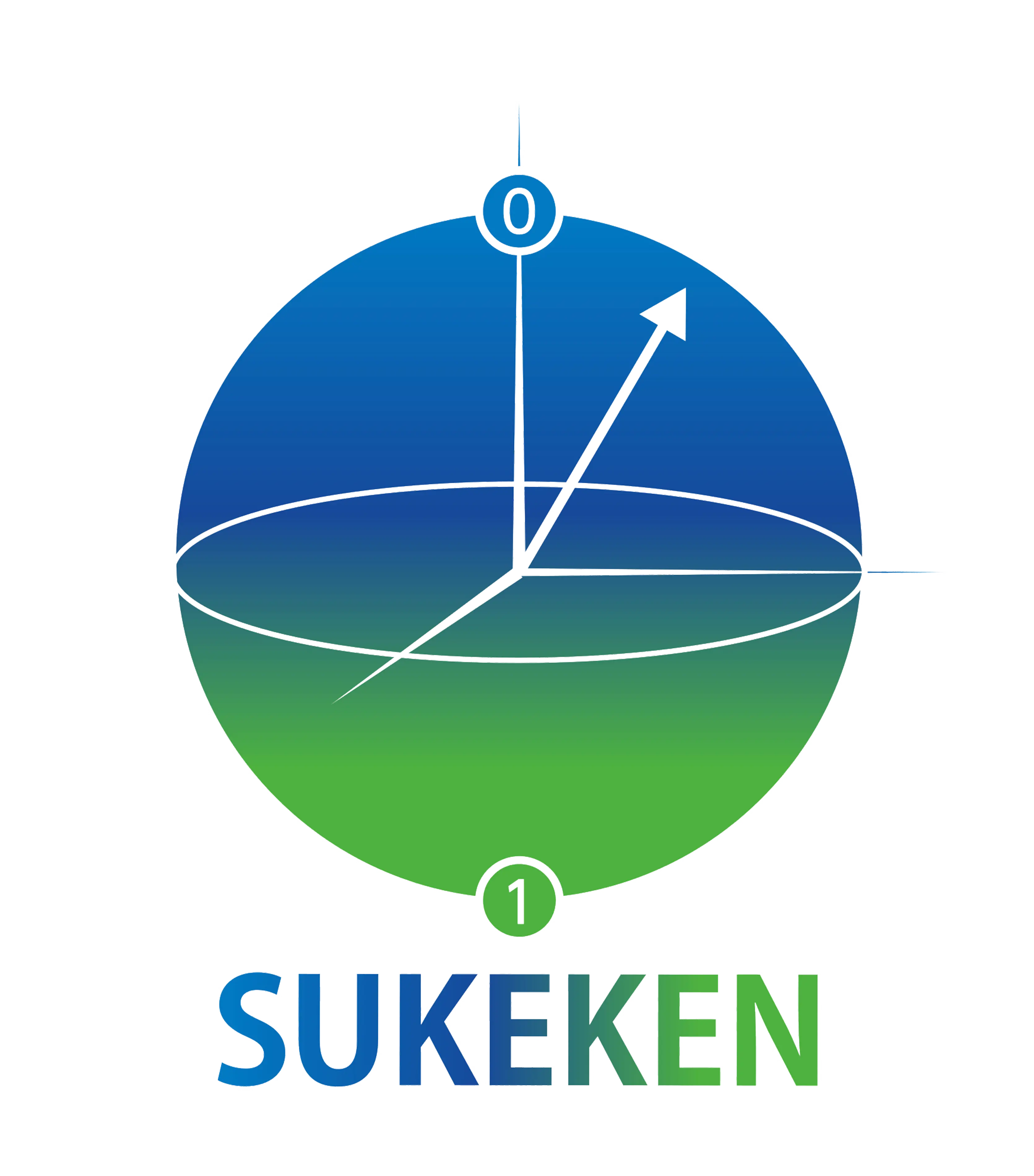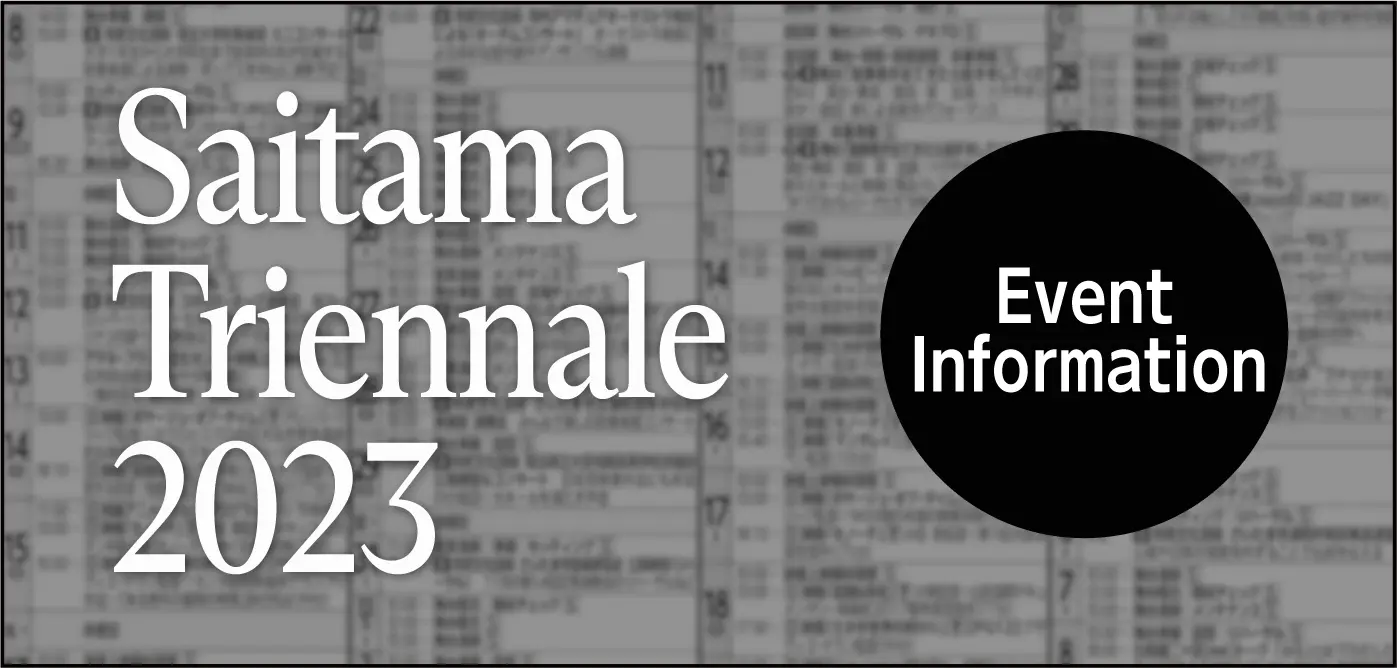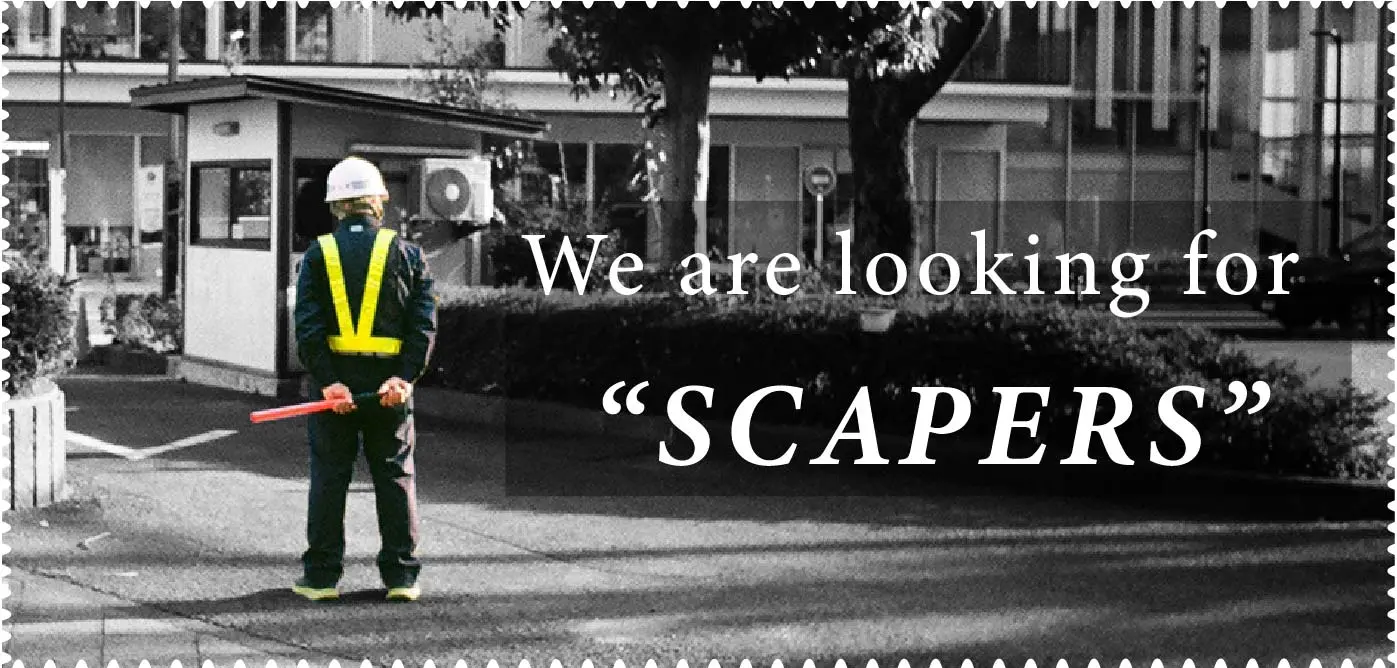Main content starts here.
今日の写真
Main venue (Former Omiya Civic Hall)
The Former Omiya Civic Hall, which serves as main venue for this festival, was completed in 1970. For a half century until its closure in March 2022, the theater was widely popular among citizens as a stage for “special occasions.” The doors that remained shut since the hall’s closure, open once again for the 65 days of the Triennale. Under the direction of 目[mé], the daily programs at the main venue features a diverse lineup of creators, including contemporary artists, researchers, editors, stage directors and bonsai masters, who present a variety of works in exhibitions and performances. Some of them can also be observed preparing or rehearsing for their performances, while exhibitions include displays that continue to change on a daily basis. Constantly moving and transforming, the main venue will present itself in a different light each time you enter it.


Theme of the Festival “We”
Who do you have in mind when you say “we”?
Saitama is a typically Japanese “city for living.” It is constantly sending its residents into the nation’s capital, only to welcome them back; it is a city that observes its people from up close, quietly from the side; how they continue to push toward the epicenter in their obsessive pursuit for sustained development. Distanced from the assertive stance of a definite “subject,” what lingers here is a landscape of vague sensibilities. The appeal of this region is more diverse than words can possibly describe, and trying to pin it down brings along a feeling of unequivocal loss. A faint resistance against people’s “unawareness,” shrouded in the secrecy of everyday life without ever manifesting itself: we embrace the opportunity for us to take a step back from this reality, in which we began to partake even before we knew it, and for me to continue to be the “I.”
We see through our own eyes—the art festival, the city, and the world—once again from the objective ground that is Saitama. From climate change, to social disparity, division, and wars, the issues faced by contemporary society cannot be factored without addressing our own complicity in them. How, in this day and age, can we define the world around us as an extension of the “I”? We present this festival from the vantage point of Saitama as an opportunity for taking a new look at the “We.”
Contemporary art team 目 [mé]
(Saitama Triennale 2023, Direction)
Artists
Anya GALLACCIO
Artist
Born 1963 in Paisley, UK
Anya Gallaccio has been creating simple yet impactful installations that focus on the natural degradation of objects like flowers, candles and ice since the 1990s. She was nominated for the Turner prize in 2003 and is currently based in London and San Diego, California.
Cooperation: The British Council Collection, Thomas Dane Gallery
ARAKAWA Koken
Artist
Born 1993 in Tokyo, Japan
Graduated from Department of Inter-Media Art, Faculty of Fine Arts, Tokyo University of the Arts in 2021. Themed on the relationships between “things” in contemporary media environments and “humans” in their childhood days, his works generate innocent sensations. His plan for Art Saitama 2023 is to create a new work based on fieldwork conducted in the Minuma rice field area.
Jens PALDAM
Electronic Composer
Born 1979 in Aarhus, Denmark
Performs with a modular synthesizer incorporating field recordings into his electronic compositions. At this festival, he will present a live performance of a new composition using a variety of audio samples recorded while staying in Saitama City.
ITO Hiromi
Poet
Born 1955 in Tokyo, Japan
Writes poems and essays based on her observations of aspects of “living” and “dying,” and from the viewpoint of a woman living in the present age. Inspired by things like raising children, living with a dog, dealing with dying parents, and an interest in Buddhism, she vigorously continues to produce works that reflect her own experiences. After spending some time abroad, Ito now lives in Kumamoto. Works include The Thorn Puller, Onna no issho (“a woman’s life”), Yoi oppai warui oppai (“good breasts, bad breasts”) and many others.
Audio courtesy of Asahi Shimbun Publications Inc.
Civic Projects
Civic ProjectsThe idea behind this project is to create things together with a broad array of local participants. A variety of programs are realized across the greater area of Saitama City, with participation from a number of artists that are based in the city.
The three Civic Project Curators have been engaging in many activities that are ongoing since the first Triennale in 2016, and continue to promote Saitama City as a place where artistic and cultural activity is rooted and cultivated.
Information on the main venue
Access
Former Omiya Civic Hall(3-47-8 Shimocho, Omiya-ku, Saitama)
15 min walk from the East exit of Saitama-Shintoshin station, or from the East exit of Omiya station
Map
- Various other related projects will be carried out at cultural facilities and in the streets across Saitama City(Access information)
Event period
October 7 (Sat) – December 10 (Sun) , 2023
[65 days]
- Opening hours:
- 10:00-18:00 (Sun, Tue-Thu)
/ 10:00-20:00 (Fri, Sat)
Last entry 30 minutes before closing. - Closed:
- Monday (Open Monday and closed the next day when Monday is a national holiday)
When visiting the main venue
- Please understand that the number of admitted visitors may be limited for your safety when viewing the displays.
- Please be aware that there is no elevator.
- You may use parking spaces for baby strollers or a nursing room.
- Please note that there are no lockers or other places to leave your luggage.
- We recommend using public transport, as there is no general parking space available at the venue.
- If you wish to use one of the priority parking spaces, please contact the Secretariat of the Saitama Triennale Executive Committee beforehand by phone:
048-767-5411(9:00-17:00 on Tue-Sat, during the festival period also on Sun) - Please understand that you may be asked to cooperate on measures to prevent the spread of Covid-19. If you have a fever or are otherwise unwell, please reconsider your visiting plans.
Visitors with wheelchairs
- The staff will provide the best possible assistance, however please understand that some areas in the facility are not barrier-free due to the building’s design.
- Please be aware that there is no general elevator at the main venue. If you wish to visit with a wheelchair, please contact the Secretariat of the Saitama Triennale Executive Committee beforehand by phone:
TEL 048-767-5411 (9:00-17:00 on Tue-Sat, during the festival period also on Sun)
Ticket information
【1-Day Ticket】
Valid for the main venue on the day of purchase/visit only (re-enter possible)
General ¥2,000 /
Saitama Citizens ¥1,500
【Festival Pass】
Valid for an unlimited number of visits to the main venue during the festival period[The Festival Pass comes with a passport holder with strap.]General ¥5,000
/ Saitama Citizen ¥3,500
【Upgrades】
A 1-Day Ticket may be changed into a Festival Pass at any time during the festival period for an extra fee (see below) at the counter of the main venue.[If you wish to upgrade, please present your 1-Day Ticket.]General ¥3,000
/ Saitama Citizen ¥2,000
- Admission is free for high school students and below, and for persons with disability certificate plus one accompanying person.
- Ticket prices include admission for programs at the main venue’s Large Hall. However, advance reservation will be required for the performances by Terry RILEY, KURATA Midori,MURAKAWA Takuya, Fashion Show and Jim O’ROURKE.
- Click here to make your advance reservation for a program at the main venue.
- Tickets may not be refunded or reissued.

SCAPER LAB


